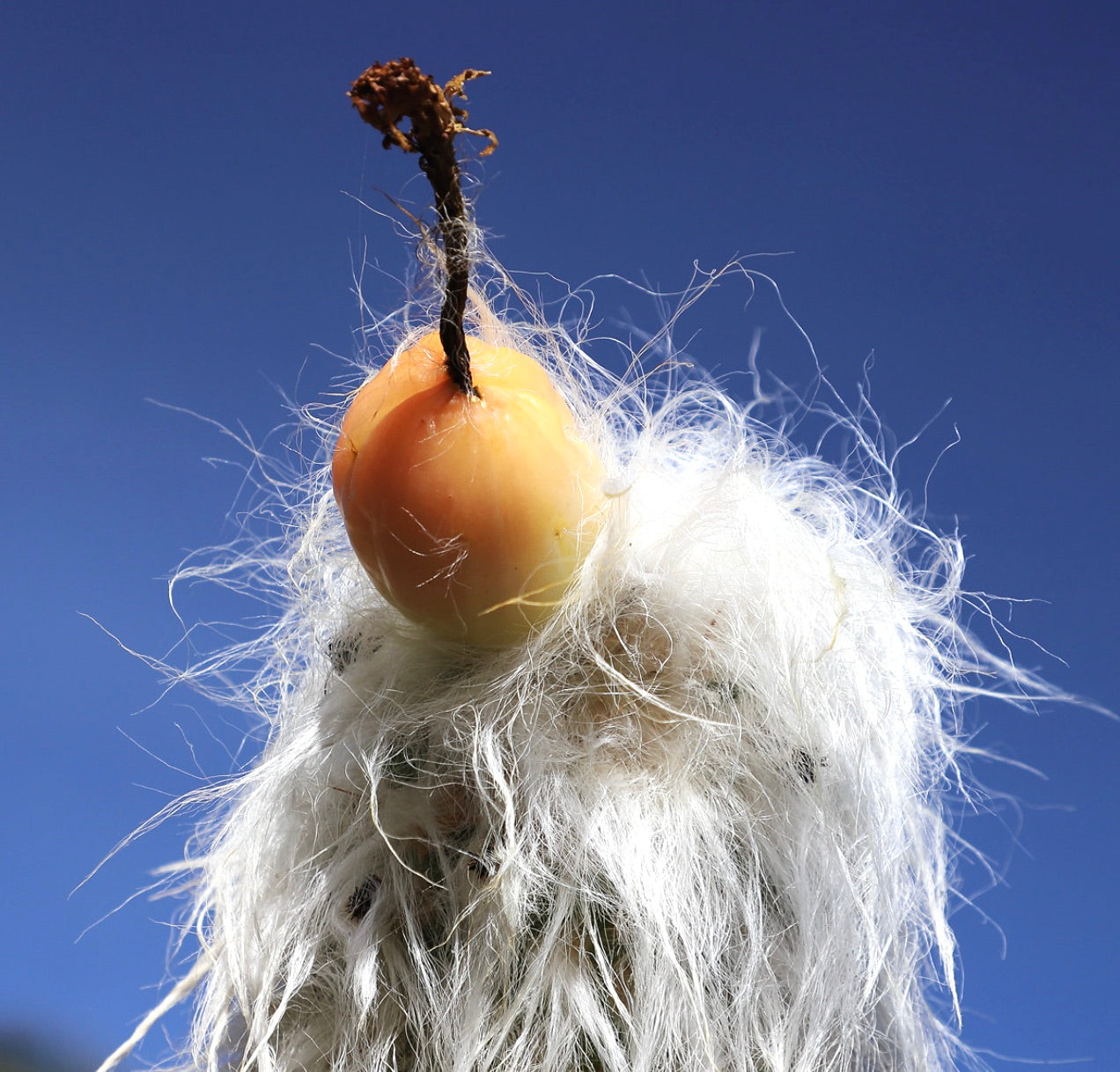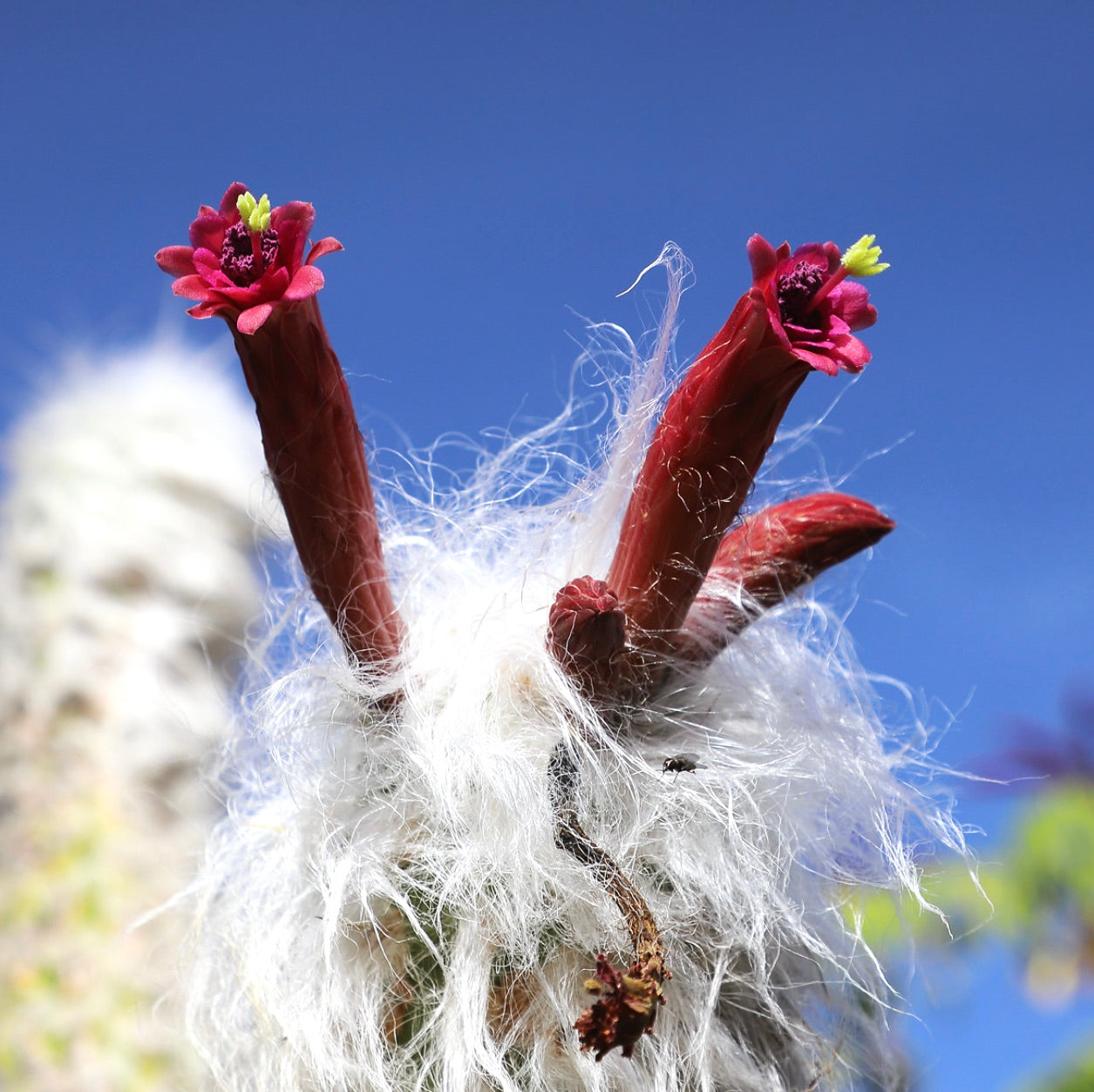Cephalocereus senilis SEEDS
Cephalocereus senilis SEEDS
Couldn't load pickup availability
Product Description
Cephalocereus senilis, commonly known as the Old Man Cactus due to its distinctive long, white hair-like spines, is a unique and visually striking species native to eastern Mexico. This cactus is popular among gardeners and houseplant enthusiasts for its unusual appearance and relatively easy care requirements. Here's a detailed description and guidance on how to cultivate it from seeds:
Description
- Appearance: The most notable feature of Cephalocereus senilis is its dense covering of long, white, hair-like spines, which serve to protect the plant from the sun and conserve moisture. This distinctive 'hair' can grow so long that it covers the cactus's columnar body completely, giving it a beard-like appearance.
- Growth: It has a slow growth rate, forming tall, slender, green columns that can eventually reach heights of up to 15 meters (49 feet) in the wild, though it stays much smaller in cultivation. The cactus has ribs with areoles from which the spines and hairs emerge.
- Flowers: The Old Man Cactus produces small, pink to red flowers at the top of its stem, but flowering is rare, especially in cultivation. It typically flowers at night and only on mature specimens.
- Habitat: In its natural habitat, it grows on steep, rocky slopes, which should be mimicked to some extent for successful cultivation.
Cultivation from Seeds
- Seed Selection: Start with high-quality seeds from a reputable supplier to ensure the best chance of germination.
- Sowing Time: The best time to sow seeds is in the spring or early summer when temperatures are warmer.
- Soil: Use a well-draining cactus or succulent mix. You can make your own by mixing potting soil with sand and perlite or pumice in equal parts to ensure good drainage.
- Sowing Process: Place the seeds on the surface of the soil, ensuring they are spaced out evenly. Do not cover them with soil as they require light to germinate. Gently press the seeds into the soil to make sure they are in contact with the moist substrate.
- Moisture: Keep the soil lightly moist but not waterlogged. Covering the container with a clear plastic lid or plastic wrap can help maintain humidity levels, acting like a mini greenhouse.
- Light and Temperature: Place the seed container in a bright, warm spot but out of direct sunlight. The ideal germination temperature is around 20-25°C (68-77°F).
- Germination Time: Seeds can take anywhere from a few weeks to several months to germinate, so patience is key.
- Aftercare: Once seedlings appear, gradually increase air circulation to prevent fungal diseases. When they are big enough to handle, transplant them into individual pots. Continue to grow them in bright light but protect them from intense midday sun.
Additional Tips
- Watering: Water sparingly, allowing the soil to dry out completely between waterings. Overwatering is a common cause of failure with cacti and can lead to root rot.
- Feeding: Use a diluted low-nitrogen cactus fertilizer during the growing season to encourage growth.
- Temperature: Cephalocereus senilis prefers warm temperatures in summer and cooler, but not freezing, temperatures in winter.
Growing Cephalocereus senilis from seeds is a rewarding experience that requires patience, especially considering its slow growth rate. However, successfully cultivating this distinctive cactus from seed can be a fascinating project, ultimately rewarding the grower with a truly unique and striking plant.
BE AWARE THAT PICTURE SHOW ADULT PLANT NOT FOR SALE THE OFFER IS FOR SEEDS
Botanical family: Cactaceae
Botanical genus: Cephalocereus
Botanical species: Cephalocereus senilis
Date of Harvest:
Cultivation
Cultivation




